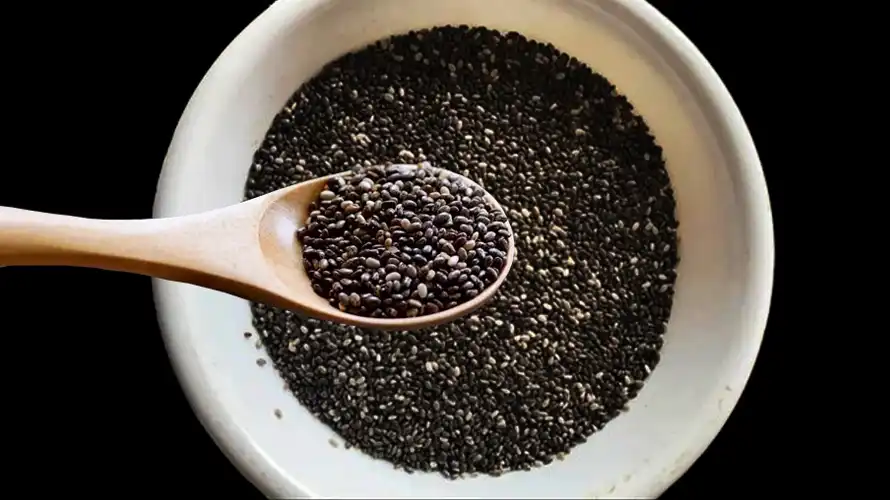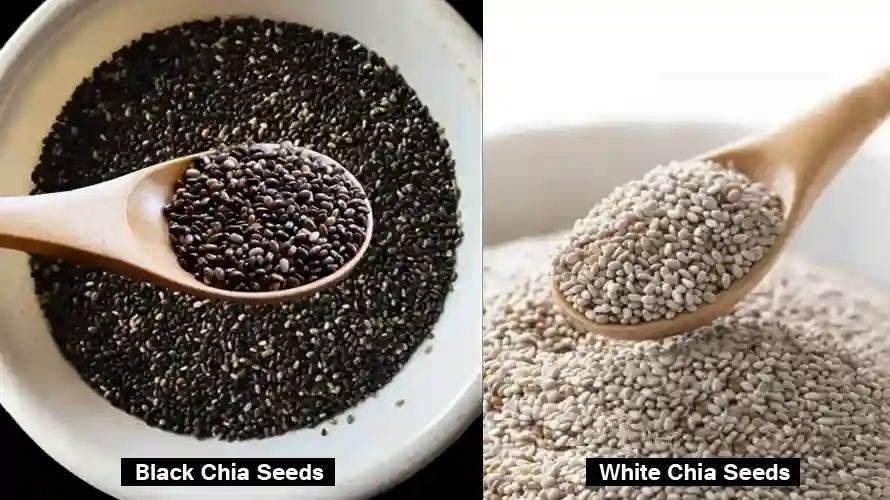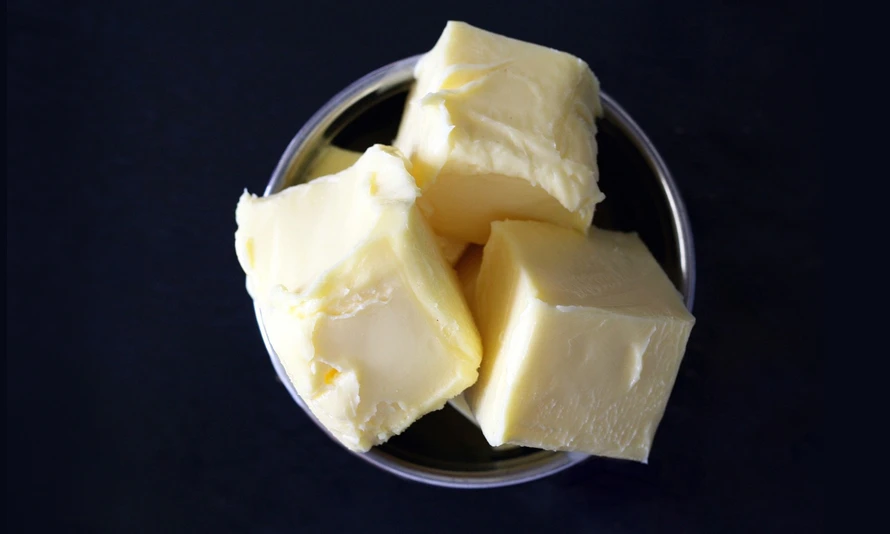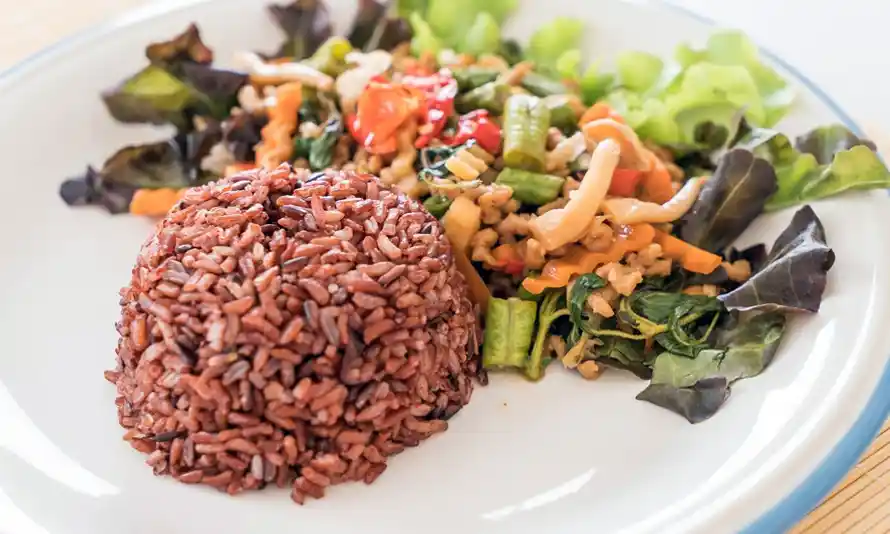Chia seeds are tiny nutritional powerhouses rich in omega-3 fatty acids, fiber, protein, antioxidants, and essential minerals. This guide explores their health benefits, nutritional profile, versatile culinary uses, and interesting facts and historical tidbits about chia seeds.

Chia seeds, derived from the Salvia hispanica plant, are small, oval-shaped seeds that pack a powerful nutritional punch. Originating from Central and South America, these seeds were a staple food for the ancient Aztecs and Mayans. Today, chia seeds are celebrated worldwide for their impressive health benefits and versatility in various culinary applications.
Chia seeds primarily come in two varieties: black and white. Both types offer similar nutritional benefits, but there are a few differences worth noting:

Black Chia Seeds
- Commonly Available: Black chia seeds are more widely available and commonly found in stores.
- Slightly Higher Protein Content: Some sources suggest that black chia seeds may have a slightly higher protein content compared to white chia seeds.
- Antioxidant Levels: They may contain slightly more antioxidants due to their darker color, which is often associated with higher levels of certain phytonutrients.
White Chia Seeds
- Less Common: White chia seeds are less common and might be more difficult to find in some regions.
- Aesthetic Preference: Some people prefer white chia seeds for their appearance, especially in light-colored dishes like smoothies and puddings, where black seeds might stand out more.
- Nutritional Differences: Nutritionally, white chia seeds are nearly identical to black chia seeds, although some sources claim minor differences in the levels of certain nutrients.
Other Considerations
- Mixing Colors: Some chia seed products may contain a mix of black and white seeds, providing the benefits of both.
- Nutritional Equivalence: Overall, the nutritional differences between black and white chia seeds are minimal. Both types are rich in omega-3 fatty acids, fiber, protein, and various micronutrients.
Nutritional Profile
Despite their small size, chia seeds are loaded with essential nutrients. They are an excellent source of:
- Omega-3 Fatty Acids: Chia seeds are one of the richest plant-based sources of omega-3 fatty acids, which are crucial for heart health, reducing inflammation, and supporting brain function.
- Fiber: A single ounce (about 28 grams) of chia seeds contains around 11 grams of dietary fiber, which aids in digestion, helps maintain healthy blood sugar levels, and promotes a feeling of fullness.
- Protein: Chia seeds provide a complete protein source, containing all nine essential amino acids. This makes them an excellent protein option for vegetarians and vegans.
- Antioxidants: These seeds are packed with antioxidants, which help protect the body from oxidative stress and reduce the risk of chronic diseases.
- Minerals: Chia seeds are rich in calcium, magnesium, phosphorus, and manganese, essential for bone health, energy production, and overall well-being.
Health Benefits
The impressive nutrient profile of chia seeds translates into a wide range of chia seeds health benefits:
- Heart Health: The high content of omega-3 fatty acids helps lower bad cholesterol levels, reduce blood pressure, and decrease the risk of heart disease.
- Digestive Health: The fiber in chia seeds supports regular bowel movements and prevents constipation. It also acts as a prebiotic, feeding beneficial gut bacteria.
- Weight Management: Chia seeds expand when mixed with liquid, creating a gel-like substance that promotes satiety and reduces overall calorie intake.
- Blood Sugar Control: The fiber and protein in chia seeds help stabilize blood sugar levels, making them beneficial for individuals with diabetes or those at risk of developing the condition.
- Bone Health: With more calcium than most dairy products, chia seeds contribute to strong bones and teeth. They also provide other minerals vital for bone health.
Culinary Uses
Chia seeds are incredibly versatile and can be incorporated into a variety of dishes:
- Smoothies: Add a tablespoon of chia seeds to your favorite smoothie for an extra boost of nutrients.
- Puddings: Mix chia seeds with milk or a plant-based alternative, sweeten with honey or maple syrup, and let sit overnight to create a delicious, creamy pudding.
- Baked Goods: Incorporate chia seeds into muffins, bread, and pancakes to enhance their nutritional value.
- Salads: Sprinkle chia seeds on top of salads for a crunchy texture and added health benefits.
- Energy Bars: Use chia seeds in homemade energy bars or granola for a convenient and nutritious snack.
How to Use Chia Seeds
Chia seeds can be eaten raw or soaked in liquid. When soaked, they absorb up to 12 times their weight in water, forming a gel-like consistency. This property makes them excellent for hydration and digestive health. Here are some tips for using chia seeds:
- Hydration: Soak chia seeds in water or juice for 10-15 minutes before consuming.
- Thickener: Use soaked chia seeds as a natural thickener for soups, stews, and sauces.
- Egg Substitute: Mix one tablespoon of chia seeds with three tablespoons of water to replace one egg in baking recipes.
Interesting Facts about Chia Seeds
Here are some interesting facts and historical tidbits about chia seeds that add to their appeal:
- Ancient Superfood: Chia seeds were highly valued by the Aztecs and Mayans. The word “chia” comes from the Mayan word for “strength,” and these seeds were used by warriors and runners as a high-energy food.
- Currency and Tribute: Chia seeds were so prized that they were used as currency and given as tributes to rulers in ancient Mesoamerican cultures.
- Hydrophilic Nature: Chia seeds can absorb up to 12 times their weight in water. This hydrophilic property makes them useful for hydration and as a natural thickening agent in recipes.
- Gel Formation: When soaked, chia seeds form a gel-like substance due to their soluble fiber content. This gel can be used to make chia pudding, a popular and healthy dessert.
- Omega-3 Powerhouse: Chia seeds are one of the best plant-based sources of omega-3 fatty acids, even more so than flaxseeds. Omega-3s are essential for heart health and cognitive function.
- Complete Protein: Unlike most plant-based foods, chia seeds contain all nine essential amino acids, making them a complete protein source. This is particularly beneficial for vegetarians and vegans.
- Sustainable Crop: Chia plants require relatively low amounts of water and can grow in arid conditions, making them an environmentally friendly crop.
- Pesticide-Free: Chia plants are naturally resistant to pests, reducing the need for chemical pesticides and making organic cultivation more feasible.
- Chia Pets: In the 1980s, chia seeds gained popularity in a unique way through “Chia Pets.” These novelty items used chia seeds to grow green “hair” on ceramic animal figures.
- Egg Substitute: Chia seeds can be used as a vegan egg substitute in baking. Mixing one tablespoon of chia seeds with three tablespoons of water creates a gel that mimics the binding properties of eggs.
- Health Trend: Chia seeds have experienced a resurgence in popularity due to their inclusion in many health and wellness trends. They are often featured in smoothies, energy bars, and other health-conscious recipes.
- Celebrity Endorsement: Numerous celebrities and athletes endorse chia seeds for their health benefits, further boosting their popularity in the mainstream health and fitness community.
These fascinating facts highlight the rich history, unique properties, and modern-day appeal of chia seeds, making them much more than just a nutritional supplement.
Precautions When Using Chia Seeds
While chia seeds are highly nutritious and beneficial, there are some cautions to consider when incorporating them into your diet:
Potential Choking Hazard
- Absorption and Expansion: Chia seeds absorb significant amounts of liquid and expand up to 12 times their weight. If not pre-soaked, they can absorb water and expand in the esophagus, potentially causing a choking hazard. Always ensure chia seeds are properly hydrated before consumption or eat them with plenty of liquid.
Digestive Issues
- High Fiber Content: Chia seeds are very high in fiber, which can cause digestive issues such as bloating, gas, and constipation if consumed in large quantities, especially for those not used to a high-fiber diet. It’s best to start with small amounts and gradually increase intake while also increasing water consumption.
Allergic Reactions
- Food Allergies: Although rare, some people may be allergic to chia seeds. Symptoms can include skin rashes, hives, or difficulty breathing. If you experience any adverse reactions, discontinue use and consult a healthcare provider.
Blood Thinners
- Interaction with Medications: Chia seeds contain omega-3 fatty acids, which have a natural blood-thinning effect. This could potentially interfere with blood-thinning medications like warfarin or aspirin. If you’re on such medications, consult your doctor before adding chia seeds to your diet.
Blood Sugar Levels
- Diabetes Management: While chia seeds can help regulate blood sugar levels, those with diabetes should monitor their blood sugar closely when consuming chia seeds and discuss any dietary changes with their healthcare provider.
Caloric Content
- Calorie Intake: Despite their small size, chia seeds are calorie-dense. Overconsumption can lead to an unintended increase in calorie intake, which might affect weight management goals.
Phytic Acid
- Phytic Acid Content: Chia seeds contain phytic acid, which can bind to minerals like calcium, iron, and zinc, potentially reducing their absorption. This is generally not a concern with a balanced diet but can be a factor for those relying heavily on chia seeds for their nutrient intake.
Dental Health
- Stuck in Teeth: Due to their small size, chia seeds can easily get stuck in your teeth, which can be annoying and may require thorough brushing and flossing after eating.
Proper Storage
- Storage Conditions: Chia seeds should be stored in a cool, dry place to prevent them from going rancid. They have a long shelf life but can be susceptible to spoilage if exposed to moisture and heat.
By keeping these cautions in mind, you can safely enjoy the many benefits of chia seeds as part of a balanced diet.
Popular Chia Seeds Recipes
Chia seeds are incredibly versatile and can be incorporated into a wide variety of recipes. Here are some of the most popular chia seed recipes:
1. Chia Pudding
Ingredients:
- 1/4 cup chia seeds
- 1 cup milk (dairy or plant-based)
- 1-2 tablespoons sweetener (honey, maple syrup, or agave nectar)
- 1/2 teaspoon vanilla extract (optional)
- Fresh fruits, nuts, or granola for topping
Instructions:
- In a bowl or jar, combine chia seeds, milk, sweetener, and vanilla extract.
- Stir well to mix, ensuring no clumps of chia seeds remain.
- Cover and refrigerate for at least 2 hours or overnight until the mixture thickens.
- Stir again before serving and top with fresh fruits, nuts, or granola.
2. Chia Fresca
Ingredients:
- 1 tablespoon chia seeds
- 1 cup water or coconut water
- 1 tablespoon lemon or lime juice
- 1-2 teaspoons honey or sweetener (optional)
Instructions:
- Combine chia seeds and water in a glass.
- Stir well to prevent clumping.
- Let sit for 10-15 minutes until the chia seeds expand and form a gel.
- Add lemon or lime juice and sweetener, then stir again before drinking.
3. Chia Seed Smoothie
Ingredients:
- 1 cup frozen berries (or any fruit of your choice)
- 1 banana
- 1 tablespoon chia seeds
- 1 cup milk or yogurt (dairy or plant-based)
- 1 tablespoon honey or sweetener (optional)
Instructions:
- Add all ingredients to a blender.
- Blend until smooth and creamy.
- Pour into a glass and enjoy immediately.
4. Chia Seed Energy Bars
Ingredients:
- 1 cup oats
- 1/2 cup chia seeds
- 1/2 cup almond or peanut butter
- 1/4 cup honey or maple syrup
- 1/4 cup chocolate chips or dried fruit (optional)
Instructions:
- In a large bowl, mix oats and chia seeds.
- In a microwave-safe bowl, heat almond or peanut butter and honey until warm and easily mixable.
- Pour the warm mixture over the oats and chia seeds, and stir well to combine.
- Add chocolate chips or dried fruit, if using.
- Press the mixture into a lined baking dish and refrigerate for at least an hour.
- Cut into bars and store in the fridge.
5. Chia Seed Jam
Ingredients:
- 2 cups fresh or frozen berries
- 2 tablespoons chia seeds
- 1-2 tablespoons honey or maple syrup
- 1/2 teaspoon vanilla extract (optional)
Instructions:
- In a saucepan, cook berries over medium heat until they start to break down, about 5-10 minutes.
- Mash the berries with a fork or potato masher to your desired consistency.
- Stir in chia seeds, honey, and vanilla extract.
- Remove from heat and let the mixture sit for 5-10 minutes to thicken.
- Transfer to a jar and store in the refrigerator for up to a week.
6. Chia Seed Pancakes
Ingredients:
- 1 cup flour (all-purpose, whole wheat, or gluten-free)
- 1 tablespoon sugar
- 1 tablespoon baking powder
- 1/2 teaspoon salt
- 1 cup milk (dairy or plant-based)
- 1 large egg
- 2 tablespoons vegetable oil or melted butter
- 2 tablespoons chia seeds
Instructions:
- In a large bowl, whisk together flour, sugar, baking powder, and salt.
- In another bowl, mix milk, egg, and oil or melted butter.
- Pour the wet ingredients into the dry ingredients and stir until just combined.
- Fold in chia seeds.
- Heat a griddle or non-stick pan over medium heat and lightly grease.
- Pour batter onto the griddle and cook until bubbles form on the surface, then flip and cook until golden brown.
- Serve with your favorite toppings.
These recipes highlight the versatility and health benefits of chia seeds, making it easy to incorporate them into your daily diet.
Final Words
Chia seeds are a nutritional powerhouse that offers numerous health benefits. Their versatility in the kitchen makes them easy to incorporate into your diet. Whether you’re looking to boost your omega-3 intake, improve digestive health, or find a plant-based protein source, chia seeds are a fantastic choice. Embrace these tiny seeds and unlock their potential for a healthier, more vibrant life.
FAQ
Hi…Just have a look at this also!






